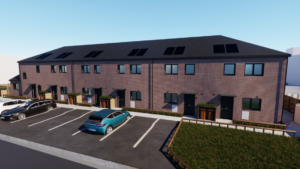Meeting the housing needs of rural communities

© Jacek.NL
It is over 100 years since the concept of garden cities was developed by Ebenezer Howard in his book Garden Cities of Tomorrow. He built on the ideas given physical form in philanthropic developments such as Saltaire, Bournville or Port Sunlight.
Garden cities, suburbs or villages have become one of the big ideas bandied about as ‘the solution’ to the housing crisis. Readers will know that I am reluctant to pour cold water on any practical solution to the failures of the UK housing market.
The garden cities were a response to the squalor and disease endemic in Victorian cities, separating industry from homes would provide healthier and therefore more economically productive workers. Given physical expression in garden suburbs and new towns as well in the planning of new estates in industrial towns such as Birkenhead or Wythenshawe, the ideas have much to commend them.
The ideas set out by Chris Walker of Policy Exchange in a publication earlier this year and repeated in a recent Guardian that coincided with the National Housing Federation annual conference bear consideration. The Policy Exchange website describes the idea succinctly. Under the proposal, locally led development corporations, set by councils, would be charged with master-planning, setting quality design standards for the construction, and allocating some of the plots to self-builders and housing associations, for a new wave of garden villages. As part of a quid-pro-quo, councils agreeing to build new garden villages sufficient to meet their housing need would be allowed to rule out having development around existing communities forced on them through appeal.
He suggests that rural communities could be encouraged to develop ‘garden villages in or close to existing settlements, as a defensive manoeuvre to prevent larger developments being promoted. In part a good idea but the critical factor is affordability and targeting occupancy. I fear that process will be hijacked by those with the loudest voices and deepest pockets with developments focused on ‘people like us’.
For rural settlements there are specific factors about wages, in agriculture, hospitality and care, for example, that mean a market driven solution to housing is unlikely to meet their needs. At the same time, communities need to have families living there to support schools and other amenities and to prevent villages becoming dormitories and weekend retreats.
‘Without access to housing that can be sustained on local wages, villages will be become retirement homes and weekend retreats with the consequent withering of local services and community networks’
Having worked in rural communities where physical isolation compounds social and economic exclusion, it is crucial to look hard at the costs of running a home where there is a strong possibility that they are not supplied with mains water or gas, sewage disposal is to a septic tank and telephony is poor. Cornwall needs over 2,500 new homes each year for people whom the market is failing: further homes for incomers, holidaymakers and weekenders will not address this problem. It needs direct action by the public sector to design, develop and deliver homes in the places and at prices the local economy needs.
For rural settlements to thrive there needs to be more than a grudging acceptance of a few new homes to avoid something worse. There must be a reappraisal of housing needs in the countryside. Without access to housing that can be sustained on local wages, villages will be become retirement homes and weekend retreats with the consequent withering of local services and community networks.
This is not to argue for large scale developments, necessarily, but to make the case for homes that will be available for new households in the long term. They can be in small groups within the settlement boundary or on land that perhaps is less productive outside. Broadly there are three types of home needed: for newly forming households; for families; and for older residents who want to give up a family home. Creating mixed developments of different sizes and tenures can have a beneficial impact on a settlement far greater than the number of homes provided. This is magnified if the homes stay available to rent or at a discount to market rates.
Many housing providers are already doing this and their efforts are important, but if there is to be a vibrant and sustainable rural economy more support is needed to provide homes. This could include fiscal encouragement to landowners to make sites available for homes on the basis that they are owned socially and not privately, sensitive infill development of large gardens or repurposing agricultural buildings. Change in rural settlements is inevitable, the point is to embrace and manage change for the many, not the few.















